
DIVING IN THE MOON
HONORING STORY, FACILITATING HEALING
Blaming The Chicken Tikka Masala
Or what happens when a storyteller has a stroke
© Janet Dowling
“I think this is an allergic reaction to nuts in a Chicken Tikka Masala,” I slurred to my GP.
My tongue was a slab of meat that I had no control over. My carefully crafted words as a storyteller tumbled to one side as I struggled to give meaning to my experience.
My GP shook her head.
“Don’t be silly. You’ve had a stroke.”
These were not the words I wanted to hear.
It was February 2006. My husband had had a stroke 6 years earlier. With a very successful and demanding career in computers, overnight he no longer had the capacity to manage the work, his team and the development of the systems. With his confidence torn away, he had to relearn how to manage the stress of everyday tasks. He was medically retired.
Part of my role to support him was to recognise the symptoms of a stroke recurring, and make sure he got medical help.
FAST!
The acronym for changes in Facial expression- one side of the face “dropping,” inability to raise one or both Arms above your head, or inability to Smile. Any sudden onset and you had to act in Time – FAST!
I observed him all the time and there were subsequent incidents – Transient Ischaemic Attacks – when we got him the medical attention he needed. And yet, when it happened to me, I denied it. It couldn’t possibly happen to me; it had to be an allergic reaction!
It must have started on a Thursday evening. I was researching a story that I wanted to tell. I’d researched different variants, and identified the common themes. Then highlighted the differences, playing with them. What did I want to develop? What would I discard? As an oral storyteller, this is the core of developing a story to tell. But my fingers just couldn’t hit the right keys, and I was typing nonsense. I put it down to tiredness and a raging headache, and decided to have an early night.
That Friday I was telling stories about 20 miles away. As I drove down the A3 I was aware that the headache was getting much worse. I asked myself why I had to concentrate so hard on the road. In an instant I had a picture in my head of a cartoon brain, with a paintbrush smearing out part of the brain. The grey was a sharp contrast to the pink of the brain cells.
I got to the venue, and told the stories. I was cold, and clammy. The headache overwhelmed me. I drove home very carefully and went to bed straight away.
Alas, not even a raging headache diminishes my appetite, and feeling hungry I rummaged in the freezer and found a Chicken Tikka Masala. By the time my husband came home, I was struggling to speak.
“Don’t worry,” I slurred, “It’s just an allergic reaction to some nuts in the Chicken Tikka Masala. “
My brother, Pete, has a similar reaction. It must be a family problem.
Over the weekend I was exhausted, and spent most of my time in bed. I had to cancel meetings with friends, all of whom expressed concern at my speech, and one even threatened to take me to the hospital herself. “Oh no, no,“ I said. “Chicken Tikka Masala. Nut reaction. My brother gets this.”
On the Monday, I admitted defeat. Even Pete’s nut reaction didn’t last this long. I rang the GP surgery, but the earliest appointment was at 4pm.
“I can’t possibly have had a stroke,” I slurred again at the doctor.
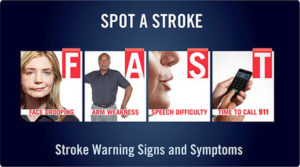 But she did her tests, and then wanted me to go to the community hospital for tests before they shut at 5pm.
But she did her tests, and then wanted me to go to the community hospital for tests before they shut at 5pm.
“I don’t want you to go for another day without being seen.”
My husband and I made the journey in silence.
The staff took me in as soon as I got here. They wired me up to the ECG machine, and took blood tests. They nodded their heads. Yes, I’d definitely had a mild stroke. My slurred speech was probably as good as it was going to get, and would likely deteriorate further. If only I’d come in within hours of the original event, they could have given me something to help my speech but now it was too late. It was one of those moments when the room spins around you, and you see all possible futures before you, with an axe hacking out the prime chunks.
I went home with a list of appointments to attend over the next few days, and a request to come back in 10 days when they would have collated all the results. And by the way, you can’t drive for six weeks.
The next few days were a whirl of tests, each time longsuffering husband had to drive me there.
I was distraught that the slurred speech would affect my storytelling and counselling work. work. I was very scared that I would lose my repertoire of over 300 stories. Aloud, I started telling myself all the stories I knew. Would I be able to remember them? I usually kept an updated list of stories to draw on in a note book. Now the note book held ticks against ones I had been able to retell. But even in the retelling, I was aware that I had the bones of the story, but some of the depth and quality of the language was no longer there.
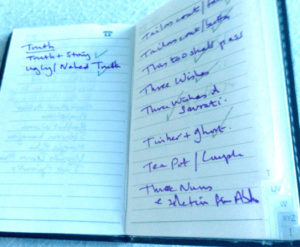 By the time I went back for the follow up appointment, my speech had improved. The staff at the community hospital was astonished. Somehow, by drawing on the stories I already had in my head, and forcing myself to speak aloud, my brain had started to establish new pathways to control my speech.
By the time I went back for the follow up appointment, my speech had improved. The staff at the community hospital was astonished. Somehow, by drawing on the stories I already had in my head, and forcing myself to speak aloud, my brain had started to establish new pathways to control my speech.
Within three months most of my speech had returned, and now I only slur when I’m feeling very tired. I had limited control over my right hand, and for a while I could not write properly, but I was able to tap at the computer.
I had three good friends who were able to take over my storytelling bookings for me, and the rest I had to cancel claiming illness. I did not want the word to get out that I had had a stroke, as peoples would make assumptions about my state of health, and work would not come my way. As storytellers, most of your work comes through word of mouth.
After six months, I felt well enough to start touting for work. I found that if I used my pre stroke stories for a programme – be it workshops or performances – then I had no problems. But it was learning new stories that became my downfall.
Most storytellers will tell you that they learn new stories by creating pictures in their heads, and then retell the story as they see the pictures. In the early stages of being a storyteller, this may involve physically drawing pictures, then imagining details using the five senses and identifying the emotional content to convey.
I found that as I tried to learn a new story, I couldn’t create the pictures in my head. It only worked if I sat down with a piece of paper, broke the story into the bones, drew the pictures and then told it aloud. I then told the story from the memory of hearing it aloud, and this only worked if I had done this in the preceding day or two. And then it was forgotten. It didn’t stay in my head, and all the effort in preparing and learning it had been wasted.
This was disastrous. It was so stressful trying to learn new material at the last moment that I declined to take on work where I had to do it. If I couldn’t work a programme from within my existing repertoire, then I declined the booking. Having been fairly well employed as a storyteller (I managed the average national wage, which isn’t bad for a jobbing artist), I was less than half time.
My lack of confidence in myself and my memory spilled over into my counselling work. I was confident that when working with a client, I was meeting their needs, and we were getting the job done. However, in supervision, I could not remember the fine details of what I had done. I stopped taking clients, although it was later pointed out to me that if I’d taken notes during the session, that this could have addressed the problem.
With a family history of dementia, I became worried that I might be heading in the same direction. I was referred back to the stroke physician who had me scanned for any evidence of a further stroke, and then she referred me to a memory clinic. It was at the local older people’s clinic – I was 55 at the time.
I explained to the consultant that my day to day memory was alright. I did forget odd things and I was prone to burning the dinner, as I would put it on the cooker and get distracted. That was resolved by using a slow cooker (a boon to those who have better things to do than hover by a hob). However I was aware of a greater deficit in the memory that I used to earn my income through storytelling.
At the start of the interview she asked me to remember three things; a penny, a table, and an apple. As she spoke, my left hand clenched itself as an apple, leaving a gap between two fingers as if a penny was slit in there, and the hand tapped itself against my thigh, as if slapping on a table. This was not a conscious movement. The interview continued, and eventually she asked me for the three objects. My left hand clenched, with a gap between fingers, and tapped my thigh. I could remember all three components without a problem.
She referred me to a psychologist to test my memory. I was to have three/four two hour assessment sessions over 4 months, and then a final feedback session.
In the meantime, I was intrigued by what had happened with my hand. Having studied psychology, I was aware of some of the brain damage research where the connection between left brain and right brain was severed. Images were shown to one side of the brain that did not have language, but did have physical control of one side of the body, and the hand-made gestures that the other part of the brain could see, and make a reasoned guess.
I knew that my brain was not severed, but maybe there was more potential in muscle memory than I thought.
I had been a Morris dancer and a Rapper sword dancer for a number of years. As a Morris dancer, we practiced weekly. However, I could never remember the name of the dances, until the music started to play. This was a regular phenomenon, and we used to joke with newcomers that practice enough and the music would tell you what to do.
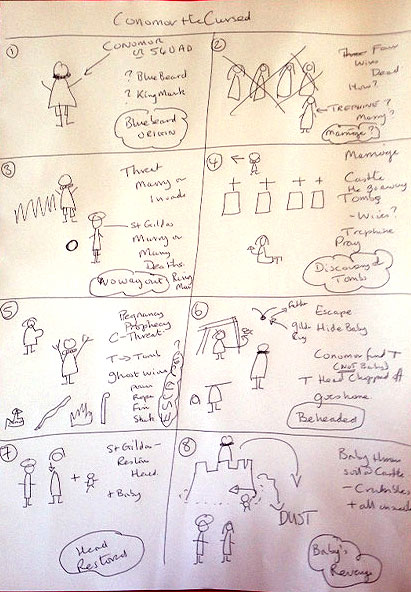 Similarly with the rapper sword dance. Five dancers, with a rapper sword linked between them, would go in and out of weaves, creating different figures and knots of the swords. It’s difficult to describe – so look it up on You tube! When I was asked to teach Rapper to a group of women after a lapse of 10 years since I last danced, I was able to draw on muscle memory to recall the figures, and the intricacies of turning left or right at the beat of the music.
Similarly with the rapper sword dance. Five dancers, with a rapper sword linked between them, would go in and out of weaves, creating different figures and knots of the swords. It’s difficult to describe – so look it up on You tube! When I was asked to teach Rapper to a group of women after a lapse of 10 years since I last danced, I was able to draw on muscle memory to recall the figures, and the intricacies of turning left or right at the beat of the music.
I began experimenting with short Aesop fables and Greek myths that were not already in my repertoire. I wasn’t investing huge amount of time learning storylines, but I could use them to explore.
After a while I found a story learning formula that worked for me. A story board is a sequence of detailed images around action, description and emotion, and the experienced storyteller does the whole process in their head. Then they draw on the images to tell the story, improvising other details according to the setting in which they are telling. I had to create a physical story board, rather than create one in my head. It was these images that I could work on in combination with a text, but no longer remember.
As the stroke happened, I had asked myself what was happening. Into my brain flashed a picture of a brain with a paint brush smearing out part of the brain. I now realised that the paintbrush was stroking away part of my brain. A stroke. What’s more it was the middle of the brain that was being wiped out. I could “see” the details of the brain on the outside of the frame. I then looked at my storyboard. If I turned the page over, I could more easily remember what was on the edge of the page, and not in the middle. Furthermore, I realised that as I read a text, I could remember the words on the right hand side of the page, but had little memory of the words on the left hand side. I used context to fill in the gaps.
If I took each image as a whole, and put keywords on the right hand side, I could “see” them. On the left hand side, my memory was a blank. Instead I drew stick pictures to illustrate the scene and relied on my muscle memory to recall the process of drawing the pictures.
However this still wasn’t sufficient. So I used the worked up storyboard to tell the story. As the story developed, I voice recorded the story. Then I played it back to myself, so that I could echo and embellish the story lines, but more importantly allow myself to use gesture to the full to establish muscle memory. I found that if I threw myself into an exaggerated gesture, that memory stayed with me.
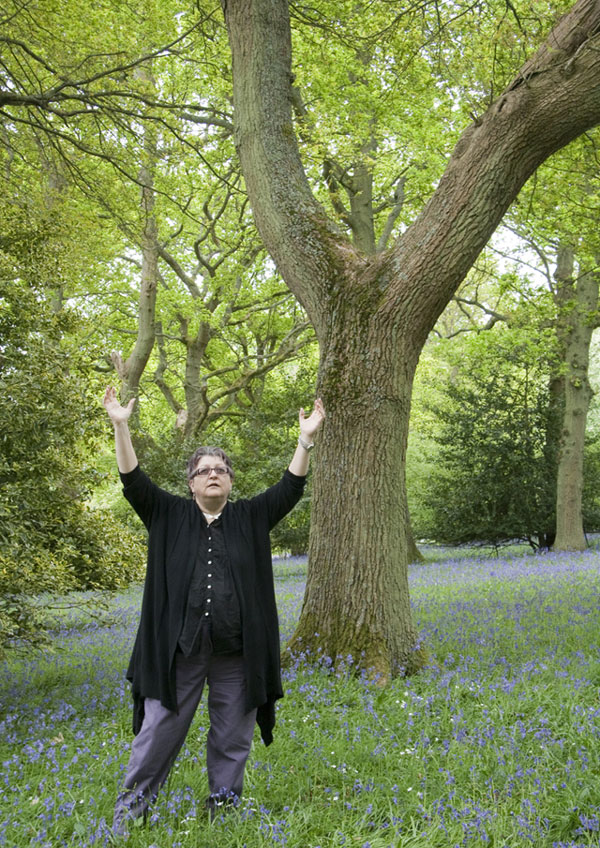 After that, it was the combination of the aural recall and the muscle memory that enabled me to retell the story. I was also acutely aware that I used little description, and that I was expressing emotion more through my body and tone of voice, than I was in words. It was a leap of faith to rely on muscle memory.
After that, it was the combination of the aural recall and the muscle memory that enabled me to retell the story. I was also acutely aware that I used little description, and that I was expressing emotion more through my body and tone of voice, than I was in words. It was a leap of faith to rely on muscle memory.
The tests with the psychologist were interesting. There were some tests that I couldn’t do, and some that we streamed through, they were so easy. However, I didn’t get the results until the last session, when she was able to collate them and see what the bigger picture was.
One of the base lines they tested were reading, which gave an indication of pre stroke IQ. I had scored below average. As we contemplated the four degrees that I have, she said that it was obviously not the case, and that it probably indicated that I was dyslexic.
It was as if the clouds scurried away, and a tension had lifted from me. I had always struggled with course work, and constantly asked myself why I had to work twice as hard as other people to achieve the same result. I was dyslexic, and I had developed sufficient coping strategies so that I had returned again and again to academia.
The rest of the report confirmed that there were parts of my visual memory that operated less well, but also that parts of my audial and spatial memory were above average. This seemed to fit in with my experience.
With renewed confidence, I set myself a task of putting together a one hour storytelling set of traditional stories that were new to my repertoire, using the techniques I had worked out for myself. I also took courses in clowning, to explore the physical presence of storytelling. It helped me enormously, but that is a story for another time.
I now have four one hour storytelling shows that are all stories learned post stroke. I am aware that the quality of language in my telling has changed, and I am more conscious of “in the moment” improvisation. I know the story line because I can hear the words in my head, and my body gives a muted form of the exaggerated gesture
Now I know to trust myself, and to listen to my body as it gives me cues for storytelling, as well as telling me when I am ill.
And I have learned to respond to the symptoms of a stroke – FAST!

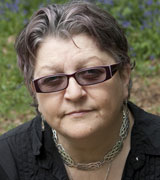 Janet Dowling is an English storyteller who focuses on stories of hope, resilience and celebration of diversity. Originally a psychiatric social worker who used storytelling as part of her therapeutic process, she now works freelance as a performance storyteller as well as working with storytelling in community projects such as bereavement, hospice work, mediation and in prisons. She is also the author of Surrey Folk Tales, published in April 2013. www.JanetTellsStories.co.uk
Janet Dowling is an English storyteller who focuses on stories of hope, resilience and celebration of diversity. Originally a psychiatric social worker who used storytelling as part of her therapeutic process, she now works freelance as a performance storyteller as well as working with storytelling in community projects such as bereavement, hospice work, mediation and in prisons. She is also the author of Surrey Folk Tales, published in April 2013. www.JanetTellsStories.co.uk
